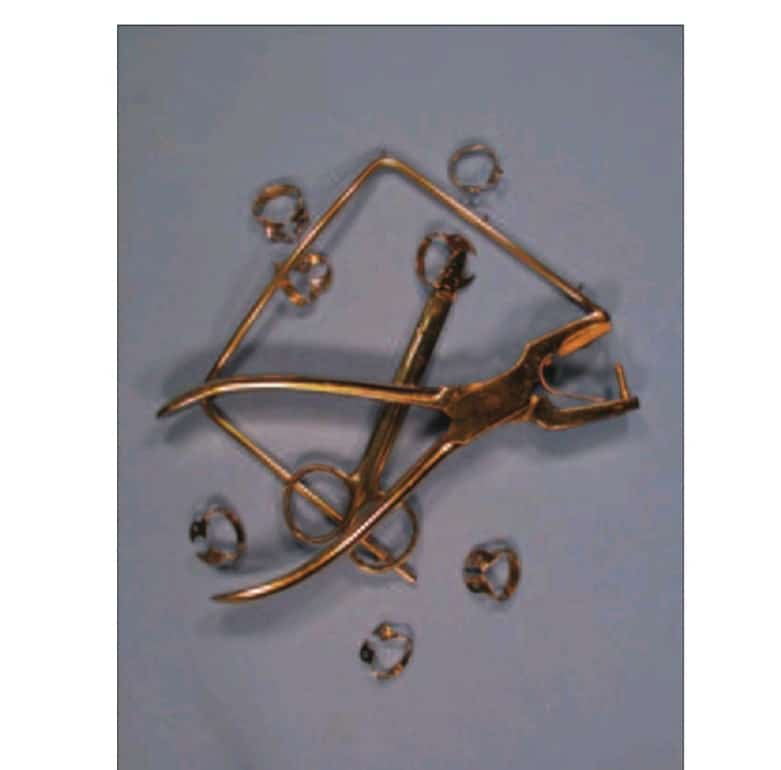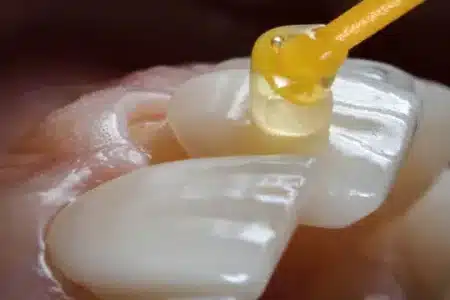Advertisement
A rubber dam is a thin sheet of material that is used to isolate the desired tooth or teeth to:
- aid moisture control
- protect the patient’s airway
- aid operator visibility and access
- reduce aerosols caused by the air turbine handpiece
- provide patient comfort by reducing the amount of water and materials in the mouth
1. Rubber dam punch
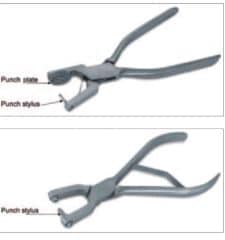
Advertisement/Sexual content
Uses
- Used to make holes of different sizes in the rubber dam sheet
- Size and position of the teeth to be isolated determines the orientation of the punched holes
- Punch stylus pierces a hole in the rubber dam sheet
- When the handle of the rubber dam punch is closed, the punch stylus meets the punch plate, which has serrated edges, to create a ‘clean’ punch
Varieties
- Available in various styles depending on the manufacturer
- In some styles, the punch stylus and plate can be replaced when they become dull (according to the manufacturer’s specifications)
2. Rubber dam clamps
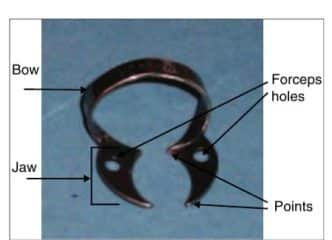
Uses and parts
- Used to stabilise and secure the rubber dam sheet during treatment
- Usually made from chrome- or nickel-plated steel – autoclavable
- Bow – rounds over the tooth. Varies between clamps and is flexible so that the clamp can have a firm hold on the tooth
- Jaw – the part of the rubber dam clamp that holds it firmly around the cervical portion of the tooth (pointed). Can be serrated for retention or smooth to prevent tissue trauma, and can be curved to fit subgingivally
- Forceps hole – where the rubber dam clamp forceps attach to the clamp for placement. Where a piece of floss can be tied to, in case of accidental displacement (the floss should be tied to both holes in case the bow breaks)
Varieties
- Various types, sizes and shapes (see figure for examples) available to use with teeth of different shapes
- Various degrees of flexibility
3.Rubber dam clamp forceps
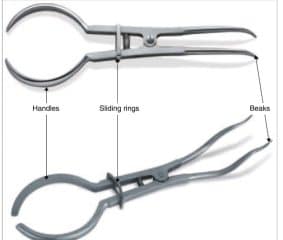
Uses and features
- Used to place and remove rubber dam clamps on and from a tooth
- Work with a spring action when handles are squeezed together
- Beaks – fit into the holes of the rubber dam clamp for secure placement
- Sliding ring – allows forceps to lock when placing the clamp and to be released when removing the clamp
- Handle – shaped to allow a firm palm-grasp by the operator
Varieties
- Available in various styles depending on the manufacturer
False friends
- Coon ligature pliers, separator placing pliers
4. Rubber dam frame (a) Metal type (b) Plastic type
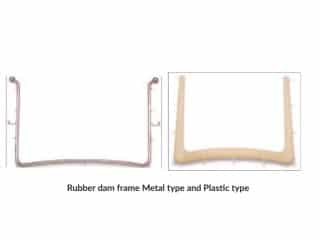
Uses and feature
- Used to stretch the rubber dam to maintain a clear working area in the patient’s mouth
- The rubber dam frame has extensions around which the rubber dam material is held
Varieties
- Available in various styles
- Can be made of different materials (e.g. metal, plastic)
5. Rubber dam material
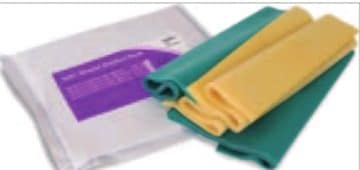
Functions and directions for use
- A thin sheet of latex or non-latex that aids with moisture control, infection control, airway protection, tissue and tongue retraction, patient comfort and operator visibility during treatment
- Is stretched around the rubber dam clamp seated in the mouth
- Can isolate one or many teeth depending on the procedure
- Waxed dental floss may be used to fit the rubber dam into the interproximal spaces of the tooth or teeth to be isolated
- May be stamped with a template (6.5b) to assist in punching the rubber dam
Varieties
- Various sizes and colours
- Various thicknesses
- Various materials
Mannequin with rubber dam in place
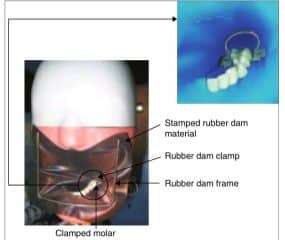
RUBBER DAM TRAY SET-UP

- Rubber Dam
- Clamp holder
- Rubber Dam Holder
- Rubber Dam Hole Puncher
- Clamp.
Set-up for placement of rubber dam
- Rubber dam material in desired thickness, stamping template
- Rubber dam punch
- Rubber dam clamp forceps
- Selected rubber dam clamps
- Rubber dam frame
- Blunt scissors/‘Beebee’ crown scissors/shears.
- Flat plastic instrument or another choice of blunt instrument (to help orientate rubber dam without puncturing)
- Dental floss
- Gauze or napkins
- Lubricant (to aid in stretching the rubber dam material over the rubber dam clamp)
- Stabilising ligatures
RELATED READING
- Moisture Control in Dentistry
- Dental Elevators and their uses
- 15 ORAL SURGERY INSTRUMENTS AND THEIR USES
- Top 10 Instruments Used for Dental Extraction
- dental instruments and their uses
- Dental Explorer: Periodontal Instrument, Dental Excavator,and their
- Dental Amalgam tray set-up (Silver-Colored Dental Fillings)
- Dental tray setup for composite fillings
- CROWN PREP TRAY SET-UP INSTRUMENTS


